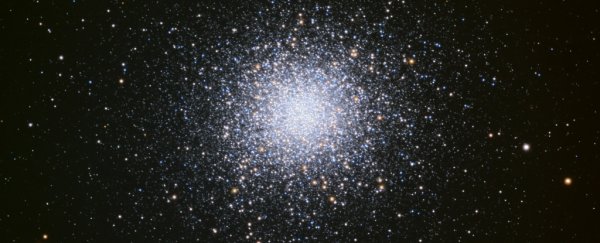We thought we had it all figured out. When a star of a certain mass ceases nuclear fusion, dies and becomes a white dwarf, all that's left to keep it shining is residual heat. Eventually it will cool to darkness, leaving a cold, dead crystal known as a black dwarf.
We don't think the Universe is old enough for such a process to have fully completed yet, so we haven't been able to confirm it. Now, it seems, we might have been wrong: Astronomers have found evidence of a white dwarf star on which hydrogen is still burning stably - albeit on the surface, not in the core.
This suggests that these remnant stellar cores might age and die even more slowly than we thought, delaying their eventual demise by burning their hydrogen-rich outer envelopes.
"We have found the first observational evidence that white dwarfs can still undergo stable thermonuclear activity," said astronomer Jianxing Chen of the Alma Mater Studiorum Università di Bologna and the Italian National Institute for Astrophysics in Italy.
"This was quite a surprise, as it is at odds with what is commonly believed."
White dwarfs are the late evolutionary stage of low-mass stars, those up to around eight times the mass of the Sun. When these stars end their main-sequence lifespans and are no longer able to fuse hydrogen in their cores, they eject their outer material.
The remaining core, no longer supported by the outward pressure of fusion, collapses into an ultradense object. This is the white dwarf, and it has a maximum mass of about 1.4 times the mass of the Sun.
These white dwarfs are extremely hot. The Universe is around 13.8 billion years old; according to modelling, it takes much longer than this for a white dwarf to cool completely. But we're deeply interested in this process. Astronomers predict that roughly 97 percent of all the stars in the Universe, including the Sun, will end their lives this way. Knowing how white dwarfs evolve can help predict the end of the Universe.
Astronomers have calculated how fast white dwarf stars should cool, which means that, if we know the mass and temperature of a white dwarf, we ought to be able figure out how old it is. This can be used as a tool for estimating the ages of star clusters in which populations of white dwarfs can be found.
We can also observe multiple clusters to have a look at the different evolutionary stages of white dwarfs, and compare them. This is what Chen and his team were doing, using the Hubble Space Telescope's Wide Field Camera 3 to study white dwarfs in two star clusters, named M3 and M13.
These two clusters are interesting, because the stars in them have similar metallicity - that's the abundance of elements heavier than helium. Such elements weren't abundant in the Universe before a few generations of stars had come and gone, fusing elements in their cores and releasing those elements into the Universe as the stars died and ejected them out into space. This means that the abundances of these elements can be used to determine roughly how old stars are.
The stars in M3 and M13 are at an evolutionary stage known as the Horizontal Branch. This is just after a solar-mass star has run out of hydrogen to fuse in its core. It has passed the red giant stage, in which it shucks off its outer envelope, and is now fusing helium.
The similar metallicities of the stars in the two clusters mean that the stars should be roughly the same age – but some of the stars in M13 are burning hotter than the stars in M3, suggesting that they might be cooling differently.
Taking near-ultraviolet observations, the researchers took a closer look at over 700 white dwarfs across the two clusters to see what difference that might make.
The white dwarfs in M3 were pretty par for the course – exactly what we'd expect to see in cooling ultradense stellar cores. The white dwarfs in M13, however, came in two flavors: normal, and those that had retained a hydrogen-rich envelope.
Computer simulations of stellar evolution showed that these stars – comprising roughly 70 percent of the stars in M13 – are burning hydrogen in their outer envelopes. This keeps them hotter for longer, which ultimately means they age at a different rate than white dwarf stars shining only with residual heat.
This is a huge deal, because it means our age estimates for white dwarfs could be off by as much as a billion years, if they are of this hydrogen-burning variety.
And, to add another spanner to the works, in 2019 astronomers found a different kind of white dwarf burning anomalously hot – enough to delay cooling by 8 billion years. This is yet to be explained, but in combination with the new findings, it does suggest that maybe we don't completely understand this stage of star life as well as we thought.
"Our discovery challenges the definition of white dwarfs as we consider a new perspective on the way in which stars get old," said astronomer Francesco Ferraro of the Alma Mater Studiorum Università di Bologna and the Italian National Institute for Astrophysics.
"We are now investigating other clusters similar to M13 to further constrain the conditions which drive stars to maintain the thin hydrogen envelope which allows them to age slowly."
The research has been published in Nature Astronomy.
